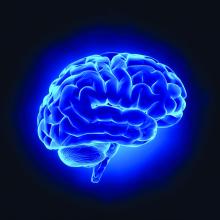The sequential use of two diagnostic tests – one assessing cerebrospinal fluid and the other assessing nasal swabs – identifies sporadic Creutzfeldt-Jakob disease with virtually 100% sensitivity and specificity, according to a report published online Dec. 12 in JAMA Neurology.
“Patients with sporadic CJD show great variability in clinical signs and pathologic lesions,” which makes distinguishing the disorder from other neurodegenerative abnormalities challenging. Researchers assessed the performance of two diagnostic tests in a case-control study involving 86 patients referred because of clinical suspicion of CJD, 81 control subjects who had other neurologic disorders, and 23 control subjects who had no neurologic disorders. The final diagnoses of the 86 case patients were established either at postmortem examination or when a definite alternative diagnosis was made, said Matilde Bongianni, PhD, of the department of neurosciences, biomedicine, and movement sciences at the University of Verona (Italy) and associates.
The case patients included 37 men and 49 women with a mean age of 65.7 years. A total of 69 of them were definitively diagnosed as having definite or probable CJD (61 patients) or a genetic prion disease (8 patients), while 17 were definitively diagnosed as having some other cause for their symptoms.The first diagnostic test was a second-generation real-time quaking-induced conversion (RT-QuIC) assay that detects femtograms of an abnormal CJD-specific prion protein in the cerebrospinal fluid (CSF), which has been reported to have a diagnostic sensitivity of 96%. The second diagnostic test applied the RT-QuIC to brushings from the olfactory mucosa using a soft, flocked nasal swab rather than the more invasive and painful cytobrush, which has been reported to have a diagnostic sensitivity of 97%.
By using these two tests sequentially, the investigators were able to identify all cases of CJD and distinguish affected patients from all the control subjects. Alternative diagnoses were immediately pursued in the 17 case patients in whom CJD was ruled out, and 5 of them were successfully treated for other abnormalities, the investigators said (JAMA Neurol. 2016 Dec 12. doi: 10.1001/jamaneurol.2016.4614).
“Our results suggest that the application of RT-QuIC testing will improve the accuracy and speed of sporadic CJD diagnosis compared with internationally recognized antemortem diagnostic criteria,” Dr. Bongianni and associates wrote.
“A positive RT-QuIC finding in the CSF of patients with progressive neurologic signs should be sufficient to establish a diagnosis of probable CJD and would make olfactory mucosa sampling unnecessary. However, when the RT-QuIC CSF finding is negative or lumbar puncture is not feasible, olfactory mucosa sampling would become necessary to confirm prion disease or to divert to alternative diagnoses,” they added.
The study was supported by the Alliance Biosecure Foundation, the University of Verona, and the National Institute of Allergy and Infectious Diseases. The investigators reported having no relevant financial disclosures.


